
StarCraft II Betting Guide
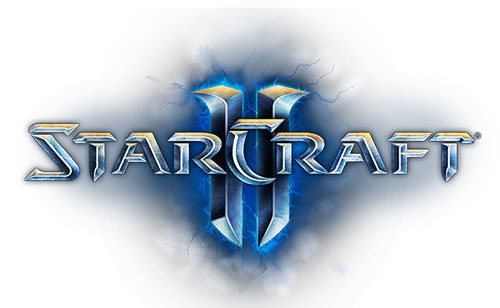
Welcome to our StarCraft II betting guide. This guide will walk you through the basic game mechanics of StarCraft II, the reason for its standing in the esports world, and the inner working of its esports scene. As you read on, you will learn how to bet on StarCraft II esports matches, what the most popular tournaments are, and who the players are who’ve had the greatest impact on the StarCraft scene.
If you’re looking to have a few bets on StarCraft II competitive matches, make sure you only do so at reliable and trustworthy bookmakers. Our sportsbooks recommendations have hand-picked the best in the industry based on several important criteria. If you’d like, you can have a look at our review section for in-depth reviews of each bookmaker by our team of esports experts.
| RANK | BETTING SITE | SIGN UP BONUS | GET STARTED |
|---|---|---|---|
 Betway Betway |
up to €30 Free Bet | VISIT SITE | |
 Spin Sports Spin Sports |
100% up to €200 | VISIT SITE | |
 888sport 888sport |
100% up to €200 | VISIT SITE |
What Is StarCraft II?
StarCraft is one of the most popular RTS (real-time strategy) game franchises of all time, designed and released by Blizzard Entertainment. The first iteration of StarCraft took the world by storm in 1998 and played a big part in the development of the esports scene throughout the ‘00s.
Starcraft I and its expansion Brood War were bar-setters and were widely praised for their strategical depth and innovative nature. In 2010, Blizzard resurged the franchise with StarCraft II: Wings of Liberty, right as modern esports started booming with unprecedented prize pools and viewership numbers. Since then, two additional expansions for StarCraft II have been released: Heart of the Swarm and Legacy of the Void – both complementing each playable faction with additional maps, units, and single-player campaigns.
RTS lovers must have noticed the massive drop-off in the availability of RTS games genre in recent years, as game developers have shifted toward trend-setters in the likes of MOBA, FPS, and battle royale games.
Nonetheless, StarCraft II still boasts a lively esports scene. The game is one of the most popular esports today, but its depth and complexity has the tendency to push some players away – thinning out its player base. This means that even as a casual bettor, you would be much better suited with decent game knowledge of StarCraft, the pros, and the state of the metagame.
How Is StarCraft II Played?
StarCraft II is an RTS, meaning you are controlling your base and units from a top-down view of the map, maneuvering your controlled units using your mouse and keyboard. The user interface gives a clear overview of everything you need: the minimap, units and buildings under your control, as well as their available functions.
As with any RTS game, the basics are the same. You collect resources, create new buildings and units, and improve your base over time with the intent of destroying your enemies’ structures by any means possible.
There are three playable races in the StarCraft II universe: Terran, Protoss, and Zerg. Each race has buildings, units, and game mechanics unique to them alone. Additionally, each race is suited to a certain playstyle. Choosing your race will depend on whether you like to be aggressive against your opponents right off the bat, stand your ground and defend while you build up resources, and so forth.
The Terrans are masters of war of attrition. They are durable, adaptable, and possess remarkable defensive power. The Protoss excel at swiftness and the element of surprise. Their warp-in technology allows quick teleportation of units almost anywhere on the map, whereas Protoss units themselves are one of the strongest in-game, but they come at a costlier price. The Zergs’ strength lies in numbers. If your Zerg opponent is given enough time and space, they can produce a small army of units that can heavily overpower any opponent, regardless of their lesser firepower.
Why StarCraft?
If you’re been reading so far without any previous knowledge of StarCraft, you may be wondering what makes it so special. The reason why many dub StarCraft the best RTS of all time is because of its remarkable depth.
Each unit has at least one ability you have to manually activate at any given time, so when you’re out on the battlefield, there are dozens of decisions you have to make within a span of a few seconds, and all the while, your opponent may be unleashing his full power at you. This is why StarCraft II requires quick, smart thinking and the ability to multitask several things at once: building your base, upgrading units, harvesting resources, and battling your opponent with a variety of units possessing different abilities.
This immense depth makes room for the birth of a myriad of creative strategies, making for an ever-shifting meta-game. Each unit has specific strengths and weakness, and in essence, your job is to counter your opponent’s weaknesses while trying to prevent them from doing the same. It’s up to you how well you use the resources at your disposal to come out ahead, but winning a long, drawn-out match is one of the most rewarding feelings a game can give you, which is why the pros are heralded as deities among the StarCraft community. As a SC2 fan, watching a match between the best players on the planet would not only serve as great entertainment but a fantastic learning experience as well.
How to Bet on Starcraft II
StarCraft II’s player base cannot be compared to esports giants such as Dota 2, LoL, and CS:GO, but the game still holds its own ground and earns good coverage among bookmakers in terms of betting markets, especially on the most prestigious tournaments.
Below, you will find the most common betting types available on StarCraft II.
Outright Winner
Outright winner represents betting on the overall tournament winner, which usually becomes unavailable once the tournament has started.
Moneyline Bet
This is the simplest type of bet. Moneyline betting means betting on the winner of a single match or series. Naturally, the perceived favorite receives lower odds, where in contrast the underdog boasts higher odds, thus a higher potential return of your stake.
Handicap Bet
StarCraft II esports matches are played in a best-of-3, best-of-5, or best-of-7 format, meaning the player with the most map wins out of the possible 3, 5, or 7 is the winner of the series.
The nature of competitive StarCraft II matches opens the doors to handicap betting – one of the most common betting types in the minds of betting experts.
Handicap betting, in StarCraft’s case, means giving a non-existent map advantage or disadvantage to one player and staking your money that they will still come out ahead. As an example, if Maru was playing against Rogue in a BO5, and you staked your cash on a -2 handicap bet for Maru, he would have to sweep the series 3:0 for your bet to come out victorious. In contrast, placing a +2 handicap bet on Rogue would mean that only one map win from his part would be enough to secure your bet.
The purpose of handicap betting is taking a bigger risk but for a much greater potential return due to the higher odds in question. Naturally, extensive knowledge of the esports scene is a requirement for profitable handicap betting.
Correct Score
Correct score represents the correct score in maps within a series between two players.
Over/Under
Over/Under is a type of bet that relates to the number of maps being played throughout the series. If it’s a BO5 in question, you can bet Over/Under with the cut-off point of 3.5 or 4.5 maps.
As an example, when betting Over 3.5 maps, you are essentially betting that the score will be 3:1 for either player or a 2:2 draw, forcing the series to a game 5. Once again, player knowledge is crucial when staking your money on this betting market, but it can be highly profitable.
StarCraft II Esports Tournaments
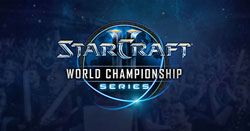
The StarCraft II esports scene revolves around the StarCraft II World Championship Series, which is a series of tournaments organized or co-sponsored by the game’s creator, Blizzard Entertainment.
This series of tournaments is evenly spread out throughout the year. The StarCraft II WCS is split into two regions: WCS Korea and WCS Circuit, both of which have individual player standings and point accumulation.
WCS Korea hosts the Global StarCraft II League (GSL), which is a series of tournaments held in South Korea. In 2017 and 2018, three GSL tournaments were held.
WCS Circuit hosts 4 events under the coverage of DreamHack. These tournaments also make room for regional challengers – hopeful up-and-comers to the scene – as well as the best players in the region.
Besides the WCS Korea and WCS Circuit, there is one big global event which is held outside the bounds of these two leagues, and that is the IEM World Championship. This tournament features a qualifier segment from the European, American, and Korean servers and a massive LAN event finale held at ESL Arena with 64 participating players. The tournament is popular because it pits all regions against each other in an ultimate showdown that’s seldom seen throughout the regular season.
Near the twilight of the WCS season, sixteen players from each region are invited to the 2018 WCS Global Finals. The merits for these invites are derived from the following criteria:
- IEM World Championship: 1 direct invite for the winner of the tournament.
- WCS Korea: 3 invites from GSL events, 4 invites from ladder standings.
- WCS Circuit: 4 invited teams from the Circuit Championships, 4 invited teams from ladder standings.
The Global Finals event is directly organized by Blizzard Entertainment and held at a LAN venue in Anaheim, California.
The tournament features a play-off stage (Global Playoffs) with 4 groups of 4 players each, where matches are played in a BO3 format. The top two players from each group progress to the Round of 8 (Global Finals). This phase of the event boasts a single-elimination bracket, but all matches are played in a BO5 format, whereas the final series itself is an epic BO7 matchup.
StarCraft II Best Pro Players
The StarCraft scene has been graced with hundreds of remarkably talented and intelligent players over the years. Some of these players have conjured up game-altering strategies that still persist to this day, whereas some have impressed everyone with their incredible speed and decision-making, playing the game at a rate that’s almost too fast for the human eye to perceive.
Even to this day, it would be foolish to claim that there is a player that has reached the peak in skill due to the immense depth in complexity StarCraft II boasts.
Without further ado, here are the top StarCraft II players we’ve singled out for the purpose of this list.
Maru
Country: South Korea
Tournament Winnings: $670,000+
Preferred Race: Terran
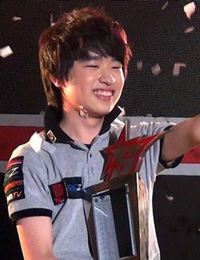
Cho Seong Ju, better known as “Maru,” is often referred to as the “young veteran.” He is known for being the youngest GSL player ever, making his debut at the mere age of 13. At the 2010 StarCraft II Open Season 1, Maru immediately caused an upset by defeating favorite Cella in a BO3 series. Despite dropping out of the tournament in the next round, at only 13 years of age, Maru showed great promise for the future, and fans were eagerly anticipating his next tournament appearance.
Two years after his breakthrough on the scene, Maru made his first big accomplishment by winning the WCS Korea 2013 Season 2 Premier League. In the grand finals, after losing his first two matches against Rain, Maru bounced back in style, turning the series around to make the final score 4:2, marking one of the most epic StarCraft II professional finals.
In 2016, Maru placed 2nd by losing to TY (3:4) in the grand final at the WESG (World Electronic Sports Games), and he won $100,000. The year after, he won the same tournament and netted himself $200,000 by edging a close series against Dark (4:3).
In 2018, Maru won the GSL League Seasons 1, 2, and 3, which pushed him to become the number-one StarCraft II player in terms of tournament winnings.
MC
Country: South Korea
Tournament Winnings: $500,000+
Preferred Race: Protoss
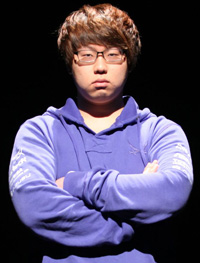
Jang “MC” Min Chul is known for being one of the best, if not the best, Protoss players on the planet. The Protoss race is known for its immense potential for aggressive play. And there’s no one better than MC at exploiting Protoss to their fullest potential. MC immediately takes the game to his opponents through his impressive micro skills and the use of Stalkers (potent Protoss units) in unleashing consistent, even demoralizing pressure on his opponents. But even if his early-game aggression doesn’t provide fruits for his labor, MC is still a great strategical thinker that can outwit pros in late-game battles of attrition.
This South Korean has two GSL titles to his belt, including one 2nd-place finish. He has also won the 2011 DreamHack Stockholm, Copenhagen Games of 2011, the HomeStory Cup IV, and the IEM Season VI World Championship.
Mvp
Country: South Korea
Tournament Winnings: $400,000+
Preferred Race: Terran
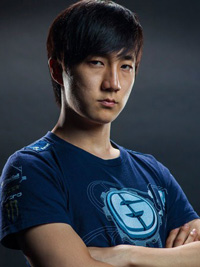
Often lauded as the best StarCraft II player of all time, Jung “Mvp” Jong Hyun is one of the most decorated players on the scene. He has won 4 GSL Seasons while reaching the final on 6 occasions, the World Cyber Games 2011, IEM Season VII in Cologne, the MLG Pro Circuit in 2011, BlizzCon StarCraft II Invitational, and many more. Not to mention his several 2nd and 3rd place finishes at respectable tournaments over the years.
Unlike a lot of other StarCraft II pros, it’s hard to pin-point Mvp’s greatest strength. He is a complete player with total understanding of the game, one who can seemingly find his way out of any situation. His strategical thinking is second to none, and he is able to time and execute his attacks with merciless perfection thanks to his impeccable micro skills. Mvp is also the main reason for the surge in popularity of several Terran units such as Ghosts and Brood Lords.
Conclusion
Hopefully our guide has given you a clear overview of what StarCraft II is. If you are a fan of the intricacies and mind games RTS games are known for, you can play the game yourself . After all, at least some game knowledge is essential to being a successful esports bettor, regardless of the game in question. On the topic of betting, we’d like to recommend you to have a look at our review section and find a sportsbook tailored to your needs for a care-free and smooth betting experience.